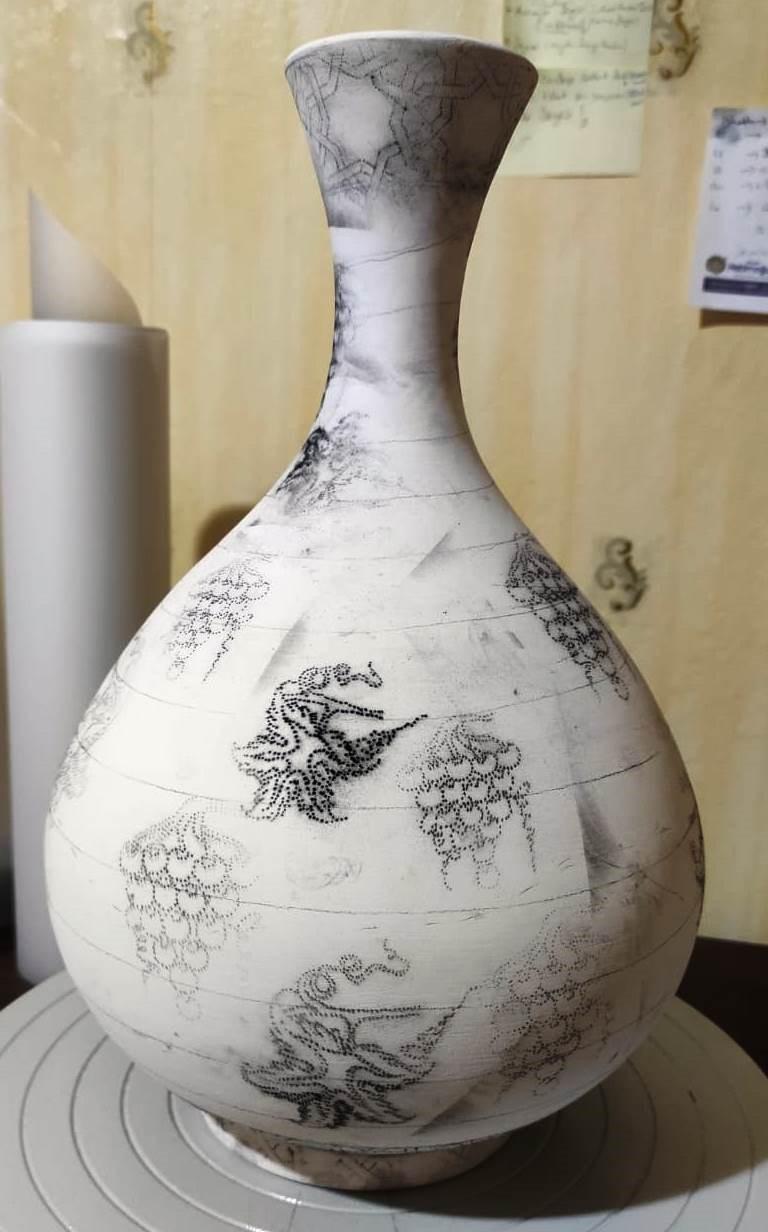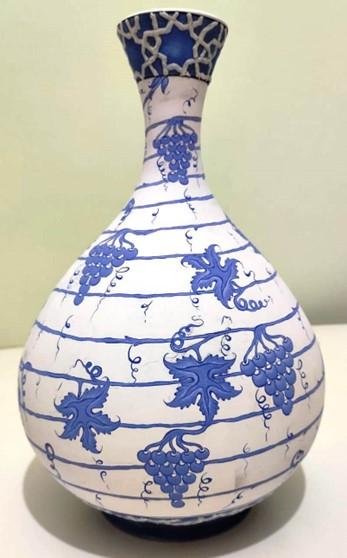Cini (Turkish Tile)
Cini (Turkish Tile), one of the most important traditional Turkish Arts, is generally used in architectural works, mosques, mansions, palaces, fountains, tombs, etc. It is a ceramic product used in interior and exterior decorations of buildings. Turkish Tile is divided into two parts: Wall Tiles: described as "Kashi" in the early stages of Tile Art and, Evani Tiles: Plates, bowls, vases, jugs, glasses, mugs, inter alia, which consist of ceramic products.
Making Iznik tiles (underglaze):
The raw materials of ceramic paste are silica, clay and frit. In Ebu'l Kasım's classic dough recipe, it consists of ten parts silica, one part glass frit and one part fine white clay. Regardless of the natural form of silica, it must first be ground to know the surface area to volume ratio before using it. There is also a measure of white clay in the dough, which is free of all foreign matter.
Underglaze tiles are applied on the biscuit-fired product. Prior to the application of biscuit-fired products, priming is performed on the product, which is left to dry naturally for 20-25 days. To ensure that the decors to be applied are more delicate, the colors are vivid, and a smooth surface can be obtained in the decoration process. The dried product is biscuit fired at 1000C. (Liner: It consists of a fine-grained, white-fired mixture that is close to the mud composition on with which it is coated. The lining, which has a fluid consistency, is poured onto the dry plate and coated. It is left to dry for about 7 days and the biscuit is baked.)
With aesthetic tile motifs, a design is produced according to the spirit world of the artist. Before the designed pattern is transferred to the surface to be decorated, the product is sanded for the last time with a fine sandpaper to get rid of dust, dirt and burrs. Following these processes, the pattern is transferred to the product. The patterns to be made on the product are drawn on thin paper (parchment, tracing). After the drawn patterns are drilled in accordance with the technique, they are placed on the product and the pattern is passed using charcoal powder. The transfer of the pattern on the product can be done by drawing with free hand.
The main lines of the pattern, which are applied with coal dust on the tile biscuit, are painted with tahrir paint using a sable brush. The tagging process can be applied with nuances according to the pattern characteristics. The purpose of the finishing process is both to determine the pattern and to obtain an aesthetic appearance and to prevent the paints from mixing with each other during the painting process.
Tile paints are obtained by using oxides in nature so that they do not flow during the glazing stage. Pigment-based earth paints used in the production of underglaze decorations add a distinctive appearance and value to the work they are applied to, with the different colour tones and depth effect they are displayed under the transparent glaze layer with which they are used. In painting the tiles, first dark colours, then light tones and finally red colour are applied.
The engraved tiles are covered with a special mixture called glass during the glazing phase. Thus, after firing, tile products have a shiny and smooth surface like glass. After glazing, the tiles are placed in the specially prepared tile oven in such a way that no products touch each other. It is cooked at about 900-1000 degrees.




